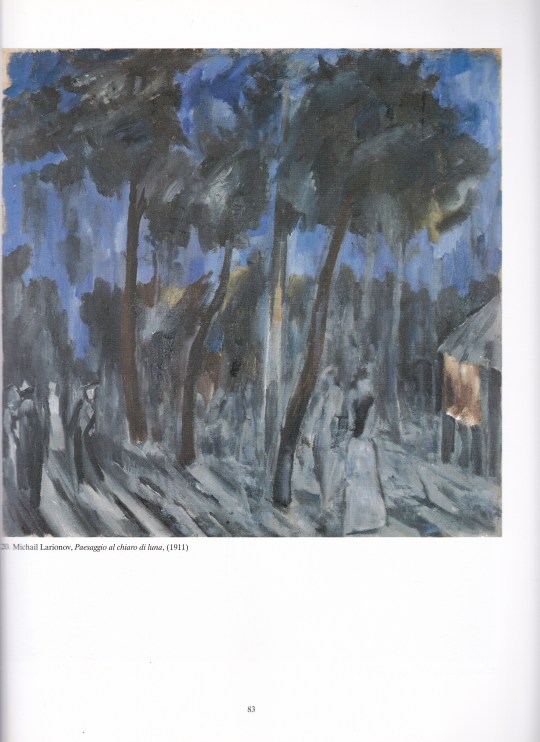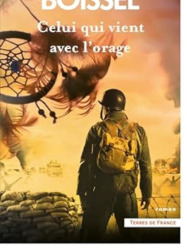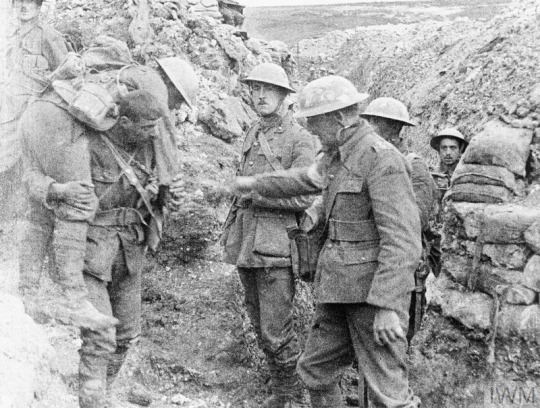#la boisselle
Explore tagged Tumblr posts
Photo
"The great mine at La Boisselle was a wonderful sight. One morning I was wandering about the old battlefield, and I came across a great wilderness of white chalk—not a tuft of grass, not a flower, nothing but blazing chalk; apparently a hill of chalk dotted thickly all over with bits of shrapnel. I walked up it, and suddenly found myself on the lip of the crater. I felt myself in another world. This enormous hole, 320 yards round at the top, with sides so steep one could not climb down them, was the vast, terrific work of man. Imagine burrowing all that way down in the belly of the earth, with Hell going on overhead, burrowing and listening till they got right under the German trenches— hundreds and hundreds of yards of burrowing. And here remained the result of their work, on the earth at least, if not on humanity. The latter had disappeared; but the great chasm, with one mound in the centre at the bottom, and one skull placed on top of it, remained. They had cut little steps down one of its sides, and had cleared up all the human remains and buried them in this mound. That one mound, with the little skull on the top, at the bottom of this enormous chasm, was the greatest monument I have ever seen to the handiwork of man."
William Orpen, from An onlooker in France, 1917-19 (Williams & Norgate 1921)

The Big Crater, 1917, William Orpen
35 notes
·
View notes
Text

IWM (Q 65411) Bringing in the wounded on the second day of the Somme. Stretcher bearers carrying man on stretcher, near Carnoy and La Boisselle, 2nd July, 1916.
27 notes
·
View notes
Photo

Night bombardment on the battlefield at La Boisselle, September 1916.
53 notes
·
View notes
Photo

Headstones at Ovillers Military Cemetery outside Ovillers-la Boisselle, IWM
#ww1#The First World War#world war 1#wwi#history#historical photos#photo#photography#The wars#military history#military
31 notes
·
View notes
Text

A German trench occupied by British soldiers of the Cheshire Regiment near the Albert-Bapaume road at Ovillers-la-Boisselle, July 1916, during the Battle of the Somme
4 notes
·
View notes
Photo










Natalija Gončarova Michail Larionov
a cura di Jessica Boissel
Mazzotta, Milano 1996, 184 pagine, Brossura, 30 x 24 cm, 81 immagini in b/n e a colori, ISBN 9788820211585
euro 29,00
orders to: [email protected]
Il volume è il catalogo dell'esposizione svoltasi a Milano, presso la Fondazione Mazzotta (Foro Buonaparte) dal 24 febbraio al 26 maggio 1996. Si tratta della tappa italiana dell'esposizione itinerante organizzata dal Musée National d'Art Moderne - Centre Georges Pompidou di Parigi. La mostra, curata da Jessica Boissel, ha presentato una cinquantina di opere degli anni 1902-1929, tra cui dipinti e gouaches, più disegni per il teatro e materiale documentario provenienti dal fondo del Centre Pompidou. Tale collezione è stata integrata con il prestito di alcuni famosi lavori dei due artisti provenienti da musei russi (Galleria Tret'jakov di Mosca, Museo Russo di San Pietroburgo, Museo Regionale di Kostroma), dal Museo Ludwig di Colonia e da collezioni private.
15/03/23
orders to: [email protected]
ordini a: [email protected]
twitter: @fashionbooksmi
instagram: fashionbooksmilano, designbooksmilano tumblr: fashionbooksmilano, designbooksmilano
#Goncarova#Larionov#Natalija Goncharova#Michail Larionov#art exhibition catalogue#Fondazione Mazzotta Milano 1996#1902-1929#Centre Pompidou#art books#fashionbooksmilano
6 notes
·
View notes
Text
Leçon de ténèbres
On entre dans Fonds noirs (Xavier Boissel, 10/18, octobre 2024) et l’on en ressort la gorge serrée – c’est en tout cas l’expérience que je viens de vivre. J’achève ainsi la trilogie commencée en 2017 avec Avant l’aube et Sommeil de cendres (2022), dont l’empan historique va de la période gaullienne, passe par Pompidou et Giscard d’Estaing, et s’achève avec Mitterrand. Il faut ajouter Autopsie des…
#Balzac#Dante#Jean-Patrick Manchette#Melville#roman noir#Samuel Beckett#trilogie#Wes Craven#Xavier Boissel
0 notes
Text
Celui qui vient avec l’orage, de Catherine Boissel
Chayton, un amérindien d’Oklahoma, reçois en héritage au décès de son grand-père une boîte. Dedans, il découvre le passé militaire de Joseph Kaawosah et, un journal dans lequel il raconte les combats lors du débarquement de Normandie, en 1944 et sa rencontre avec Millie. Entre eux, ce fut immédiatement un amour très fort qui se noua. Un amour platonique car ils étaient trop jeunes et, la guerre…

View On WordPress
0 notes
Text
Soldiers experience PTSD after seeing war. War experiences PTSD after seeing Adrian de Wiart
y'all this fucker
sources:
Sabaton The Rake Biographics ATI
He enlisted when he was underage to the British army with a fake identity, then, in a battle against South African Boers, offered to charge through no man's land to remove barbed wired that was protecting the Boers at the current battle. His general didn't let him though. They say his life was saved, but given what he did after, I don't doubt he could survive somehow. He did take a bullet to the groin though, which at this point sounds insane but compared to what he went through later, eh.
He wanted to experience war, so in 1914 he went on a British ship attacking rebels, specifically mad-mullah in Somaliland right before ww1 started. He wanted to get back to fight there. In November, he and some other troops got really close and as he took a glance, he was hit, splinter in his eye, then another bullet exploded and hit the same eye again. He refused surgery so he could get back to Europe, eye or no eye. Indeed, he got back, no eye.
He reenlisted for the great war and was quickly accepted, but the British army didn't want the Germans thinking they were on their last leg, sending injured soldiers. He agreed to wear a glass eye, but then threw it out of a taxi and put on an eye patch.
He was known for this eye patch.
He made his way to the frontline out of curiosity, artillery shells were firing on the area. His second in command told him he should duck when shells fall. He refused. A shell landed near him and SIC ducked, Wiart got sent flying, when he got up he saw SIC's hand laying there, his body 40 yards away.
So he kept going along the bombed out Menin road...
Bunch of dead Germans around despite no reports of Germans here, eerily silent, when suddenly a whole lot of German fire came in. he went down, saw that his hand was basically that of a zombie's, got up, and just fucking ran. He made it, and got to a doctor. The following quote fucking kills me
“My hand was a ghastly sight; two of the fingers hanging by a bit of skin, all the palm was shot away and most of the wrist. For the first time, and certainly the last, I had been wearing a wrist-watch, and it had been blown into the remains of my wrist. I asked the doctor to take my fingers off; he refused, so I pulled them off myself and felt absolutely no pain in doing it.”
He took off his fucking fingers. His hand was amputated.
And it gets crazier because despite this, he went back to the war in 1916. Not as some guy in the back strategizing, but as infantry, while unable to hold a rifle.
He was a general, and he often went into danger and was totally reckless so that his soldiers would have no excuse to not fight because he had always been through worse.
On July 3rd, he went to attack la Boisselle, the strongest German position. By nighttime, almost all his men were either dead or wounded, when he was suddenly knocked to the ground, the whole back of his head had been blown off by a machine-gun bullet. It missed all the vital parts, but holy shit. He survived, and got to the medic's.
He got the Victoria cross for this. Anyway 3 weeks later, this man, by his own volition, against all the doctors' wishes, was back in the front lines.
I'm adding this read more link here cuz if you read this far, it's not gonna deter you like it would up there
In 1917 British artillery was dominating, yet he still managed to find himself in a German barrage. His clothes were blown into his hip by an exploding shell. The wound went septic. He survived. By now, no one wanted him to go back to the front lines, but he managed to convince general Hubert Gough to let him back anyway.
He got into the battle just in time for the German spring offensive of 1918, where he got into a dangerous spot again, and got shrapnel lodged in his hip, nearly costing him his leg. When he got back to the hospital, he found that his fame as the unkillable soldier had spread. I don't know if he liked this title, none of the sources I could find mention his feelings about it.
If you've ever heard of this man, it was probably as a WW2 veteran, which by this point is insane because no man should still be fighting by now. But this guy. There was still some fighting going on, while he waited for the second World War though.
By the time he got back to the front lines the war had ended, for most people this would be a fortunately. Not for this guy. He's well known for how he said, "Frankly, I enjoyed the war." He was upset by the ending of the war, despite being probably the most injured among its survivors.
In 1919, he was assigned to Poland as a military advisor. In just two years Poland got into wars against Russia, Czechoslovakia, Ukraine, and Lithuania, but it didn't take him until the end of the year to get into not one but two plane crashes, and came out of those, completely unscathed.
The first one, he was travelling up to Riga in Latvia, flying at low altitude cuz bad weather, when a German soldier shot at his plane. When he got off, he saw a bullet hole 6 inches from his seat. I couldn't find more details on this.
The second one, I could find even less details. His plane crashed, but it was out of fuel so it didn't explode. He was fine.
I couldn't figure out which, but one of those two got him captured and held briefly in Lithuania, during which he read his own obituary in the Berlin Periodical, they thought he died from that bullet to his plane. I couldn't find the obituary, beyond mention in The Rake's article. Maybe a German speaker might have better luck.
In 1920, he was really close to the front against Russia, when his observation train was attacked by Cossack cavalry trying to hijack it. I don't know how many there were, He fended 'em all off though single-handedly, with a revolver. At one point he fell off the train, but he got back on and kept fighting.
In 1921, the poles won, and 2 years later, he finally retired as a major general in Poland. For the next 18 years he actually lived like a normal person, well as normal as you can get at that point. Then WW2 started, and I don't believe he was upset.
Now, Even for a lunatic like him, Poland was the worst place to be, so he got a fake passport and escaped with Romania to Britain, where he immediately re-enlisted because you can't pass up a chance to play IRL Call of Duty. Or at least that's what he was probably thinking because I can't imagine it being anything else.
In April of 1940, As a one eyed, sixty yro, amputee, He was tasked with leading an Anglo-French force in Norway. Before He even got there, his plane was attacked by a German fighter plane and he crash-landed in a fjord, That's in the water. Instead of what he was supposed to do, getting on a rubber dingy and sailing back to shore as a sitting duck, he just sat there in the wreckage and waited for the German Plane to run out of ammo. A naval vessel came to pick him up.
He got to Norway, but he and his men were outgunned, outnumbered, and were quickly surrounded. Other times, he should have died based on his injuries. This time, he should have died based on his position. If it was god's plan for him to die though, he was an atheist (AFAIK there is no info on his belief in god, this is an analogy).
With his leadership, they managed to get the one out of 14 million futures where they escaped. He and his men managed to get over mountains to reach Trondheim fjord under bombardment of Luftwaffe, naval artillery strikes, and ski troops. Still under artillery bombardment, the Royal Navy ferried them out of there.
Apparently April likes him, or maybe hates him, cuz in 1941 of that month again, he was appointed by Churchill to lead a secret mission in Yugoslavia, that turned to absolute shit.
He took a wellington bomber there, but on the way the plane nosedived into the Mediterranean Sea, a mile and a half off Libya's (which at the time was an Italian colony, so AXIS!!!) shore. They tried waiting on a wing, but the plane sank, so they started swimming to shore, which was hard when a few of his men had shattered limbs. This absolute chad who was straight up missing a limb, helped them all make it to shore, Axis shore.
He ended up a Prisoner of War in castle Vincigliata, which was specifically for senior British officers. ATI describes his time there as akin to The Great Escape. I never watched the movie. It's hard to find info rn about all 5 of the attempts online, but I did find this book about them, I haven't read it yet so I can't say I recommend it but y'know if you're interested.
The most notable of his attempts involved a 7-month tunnel project, and them dressing up as Italian citizens, they had really well-made faked documents and everything. Unfortunately though, given one of them was with an eye patch, lacking an arm and covered in scars, the 8 days they were out were a miracle.
This is pretty much the end of the insanity, but not of his career.
He was there until Mussolini was ousted. At this point King Emmanuel, the new leader of Italy, pretended to still be helping Hitler, but Italy wanted to switch sides. They decided Wiart would be the perfect intermediary, because he was scheduled for release due to his disability. I also forgot that his half blindness and one-handedness counts as a disability, don't worry about it.
He was taken to an Italian tailor which he hated, and was made a suit which he not-hated, and was flown to Lisbon with General Castellano, the king's chief negotiator, on the 16th of August 1943.
He got back to the UK on the 28th and had a month of quiet time before he was assigned a new mission by Churchill. Churchill sent him as a representative in china for 4 years until 1947, during which he befriended Nationalist leader Chiang Kai-Shek, advising him on strategies against japan, and managed to piss off Mao Tse Tung. Apperently there was also another plane crash, but I couldn't find any details.
On his way back from china he visited a friend in Rangoon Burma, when he slipped on a coconut mat and fell down the stairs, breaking his back. during surgery the doctors not only treated this but they found and removed quite a bit of shrapnel in him too.
After this he finally retired, for good this time, as an absolute legend. And yet he's barely even talked about!?!?!?
I'm off to try and get a copy of his autobiography, you go listen to Sabaton's song about him.
0 notes
Text






05/05/2019 - Day 2 (Part 1)
Day 2 is the first full day of the trip and starts at a nice 9.30am. The groups meet at a local supermarket to stock up on lunch essentials, mainly consisting of bread and cheese (when in France).
The iternary today is the following;
Various cemeteries
Sausage Valley
Lochnagar Crater
Mametz Wood
Delville Wood
High Wood
Caterpillar Valley
German Bunkers
Multiple frontline positions
Instead of talking about every detail of travelling from point to point i’d like to share the facts we learnt at each important location.
Sausage Valley The name given by British soldiers during the first world war to a valley south of of La Boisselle in the Somme. Named because the Germans would fly an observation balloon that looked like a "sausage", at the head of the valley. To the north of La Boisselle a valley was therefore logically known as Mash Valley.
Lochnagar Crater The Crater was created by a large mine that was at the time believed to be placed beneath the German front line on the first day of the Battle of the Somme, The British named the mine after ‘Lochnagar Street’, a British trench where the Tunnelling Companies of the Royal Engineers dug a shaft down about 90 feet deep into the chalk. Then excavated some 300 yards towards the German lines to place 60,000 lbs of ammonal explosive in two large underground chambers. The aim was to destroy a strongpoint called Swabian Heights south of the village of La Boisselle.
Mametz Wood Was the objective of the 38th Division (Welsh), to attack over a ridge, focussing on the German positions in the wood at a lower level, This occured between 7th July and 12th July 1916. On 7th the first wave of men proceeded with the expecatation to take the wood in a matter of hours. However, strong fortification and machine guns decimated over 400 soldiers before they’d even reached the wood.
Further attacks were attempted and by the 12th of July 1916 it was estimated 4,000 men were killed or wounded from the Welsh division attempting to clear the woods which in the end was the result. Our next stop will be Deville woods where we will have lunch and visit the cemetary and South African memorial.
#landrover#defender#landroverdefender#defender110#4x4#defendertd5#overland#td5#overlander#ww1#ww1 history#fricourt#mametz#longueval#la boisselle#lochnagar crater
8 notes
·
View notes
Photo

"Leave no trace"
Les fins du monde
Villiers-la-Boisselle, Hauts-de-France
©PTRCMR
#ptrcmr#leave no trace#les fins du monde#villiers-la-boisselle#hauts-de-france#landscape#landscape altered by the man#contemporary landscape#landscape photography
46 notes
·
View notes
Text

Battles of the Somme. Bringing in the wounded. Stretcher bearer carrying man on shoulder, near Carnoy and La Boisselle, 2nd July, 1916.
38 notes
·
View notes
Text



Troops of the 34th Division advancing during the attack on La Boisselle, during the Battle of the Somme (Battle of Albert). 1 July 1916
14 notes
·
View notes
Text
Ce que disent les hirondelles de Catherine BOISSEL
Ce que disent les hirondelles de Catherine BOISSEL
Le résumé des éditions PRESSES de la CITE – 07 avril 2022 : Une belle chronique familiale en Normandie incarnée par des personnages attachants avec leurs doutes et leur courage. Et une éclairante page d’histoire qui couvre les années 1930 et fait suite aux romans Les Portes du bonheur et La Chanson de Julien.En Normandie, Henri et Pauline forment un couple uni. Mais, en ces années 1930, la vie…

View On WordPress
0 notes
Photo

Soldiers of 'A' Company, 11th Battalion, the Cheshire Regiment, occupy a captured German trench at Ovillers-la-Boisselle on the Somme. In this photograph one man keeps sentry duty, looking over the parados and using an improvised fire step cut into the back slope of the trench, while his comrades rest.
#1915#trench#The First World War#history#historical photos#british army#British history#france#military history#military#ww1#wwi#world war 1#world war one#The Great War#1918#1917#1916#the war to end all wars#Battle of the Somme
69 notes
·
View notes
Photo

Watercolour portrait of La Venus 1787, by unknown
This is a beautiful ship portrait or captain’s painting for Captain Boissel. These kind of painted memento was popular with captains to remember their ships .
73 notes
·
View notes